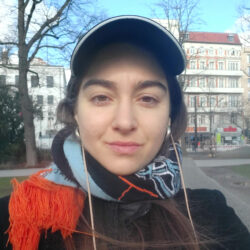Strategies of Collecting: Artists’ Online Archives
Teresa Fazan
In my research, I looked at how and why dancers engage with means of documenting and displaying the art of others.
I interviewed four artists engaged in creating online databases/projects related to the theme of the archive. These conversations prompted me to consider how the history of dance and choreography is produced. The meetings with Ola Osowicz, Agata Cieślak, Nitsan Margaliot and Sasha Portyannikova taught me that dance history is created through representation and repetition — the reinforcement and disruption of the canon — and exposed similarities in the outcomes of their projects, as well as differences in ways of conceptualizing collections and deciding whois represented and how.
The Covid-19 pandemic was recognized as an opportunity by all of the artists, as there was a need to connect and represent their work during a time of isolation. While discussing the necessarily local scopes of their projects related to regional funding, my interlocutors highlighted the aim to exceed set boundaries. The issue of language came to the fore: the need to be read by the West, the assumed general public, prompted the use of English, making national languages optional, regardless of whether or not they were desired.
All projects exposed that artists want to speak for themselves on their own terms and reach each other and audiences directly, without the mediation of curators or institutional platforms. By all interlocutors, the online realm was recognized as an accessible and potent medium, as it enables the surpassing of geographical boundaries and the development of projects in any direction. The over arching theme of the interviews was the desire to disrupt the dominating narrative by including artists who are excluded from the mainstream.
